Road transport providers in North America have been working with OEMs on a range of initiatives to better utilise capacity as vehicle output continues to recover despite bottlenecks and capacity shortages. Key FVL trucking providers speak to Megan Kelly about how they are mitigating disruption, enhancing services and navigating congestion affecting other modes.
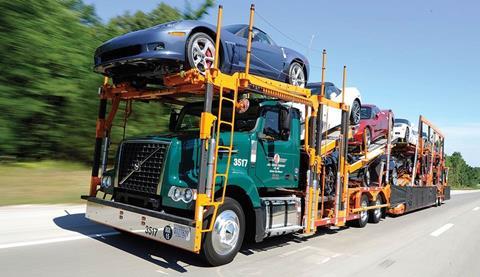
As the industry continues to recover after years of disruptions, manufacturers and logistics providers are focusing on disrupting the status quo to raise the network’s performance, reimagining FVL and the trucking sector to strengthen resiliency and prioritise visibility. Initiatives such as improved vehicle sequencing and scheduling, including advanced notifications, better load building, driver incentives and direct chartering by OEMs are being implemented in a bid to ensure past mistakes aren’t repeated. Finished vehicle logistics providers are also investing in digital technology to improve tracking, transport and yard management, along with intelligent ETAs.
Unblocking bottlenecks and spotting digital solutions
Data and strategic intelligence on rail car capacity and network challenges are closely held by the Class 1 railroads, and FVL and freight transport solutions firm RPM says that it depends on its OEM partners for visibility of capacity and constraints - something that has plagued rail over recent years. However, the rail capacity problem is lessening.
“By having proper visibility downstream to pending rail capacity constraints, the RPM business model can adjust by engaging different carriers, utilising various trailer types, and attracting more consistent drivers who can handle increased business volume,” says Bill Kerrigan, chief commercial officer, North America and Europe, RPM. “This leads to longer over-the-road hauling, which, in turn, fosters synergies within the OEM’s networks and positions trucks throughout the country that are not typically present on a more consistent basis.”
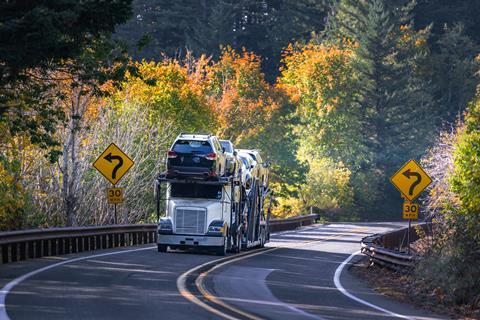
While rail capacity woes are somewhat recovered, a huge challenge in transporting finished vehicles by trucks is the knock-on effect from port disruptions. Incidents, like the bridge collapse at Baltimore port in March, can put immediate strain on the FVL sector, forcing trucking firms to reroute instantaneously all while already facing labour shortages, rising fuel costs and aging infrastructure that can struggle to handle growing freight traffic.
“There are always challenges of variability in the supply chain, as OEMs deal with their own internal production issues that cause bubbles in inventory that we’re here to help with,” says Nick Thompson, VP of North America FVL at Vascor. “We try to provide storage solutions and capacity to store vehicles while those OEM holds are going on. We’ve been seeing that at least in the first part of this year people have needed some storage space in the areas that we operate.”
Asparuh Koev, founder and CEO of predictive analytics firm Transmetrics says that the past year has been a wake-up call for the supply chain, putting the focus instead on proactive planning and the benefits of using advanced analytics, rather than reacting to disruptions.
“We can use data to predict demand,” Koev says, “but the benefits go beyond immediate disruptions. Data analytics can help identify long-term trends, and FVL companies can use this foresight to invest in the right equipment and infrastructure to cater to the changing automotive landscape.”

This solution can feed data analytics tools with real-time terminal and highway data, allowing freight companies to choose the next best land option and optimise routes and schedules efficiently. “Parameters are constantly changing, with ports opening and closing due to natural events, like the Panama canal’s ending dry season, and it’s critical these developments are accounted for at all times for any automated analytics software to function properly,” Koev adds.
“I envision a system where carmakers can share real-time needs with carriers, and carriers can optimise their routes based on that data,” he says. “Everyone wins. Carmakers get efficient delivery, carriers maximise capacity usage, and dealerships receive vehicles faster. Standardised data formats and robust security practices are crucial. The industry needs to work together to establish trust and ensure everyone benefits from a data-driven approach.”
Vascor currently has a lot of its software built in-house and is able to modify its parameters to meet the needs of different OEMs who require a customised version, rather than an off-the-shelf type of software service. Vascor’s Thompson says that due to this, he doesn’t feel a pressing need for widespread software integration through scrapping old software models to align on one new model across the board. Instead, each system can be tweaked.
“We can’t just ramp up and ramp down [capacity] with the snap of a finger. We can’t build the church for Easter Sunday. That doesn’t make economic sense.” - Mark Anderson, United Road
Mark Anderson, CEO of United Road agrees. He says that not every part of the supply chain has to be using the same software and can look to integration tools if need be. “I think these integration tools, where both [the OEM and FVL provider] can see the information we choose to share with each other, will help with transparency and communication. But I think the more we hold each other accountable, the better all of us will get in that respect.”
A grasp for control leading to lower efficiency
Capacity constraints in FVL in recent years have lead to carmakers chartering their own trucks to secure space and get their cars to the end customer with more control. However, the move is perhaps more problematic for the optimisation of vehicle carrier capacity, and has proven to be a repeated, often short-lived step taken by OEMs during crisis periods that only increases costs and competition and reduces efficiency overall.
According to a 2023 study by the American Trucking Association, over 90% of for-hire trucking companies operate five or fewer trucks, and these smaller players bring flexibility and regional expertise to the network, says Transmetrics’ Koev. “A big shift towards carmakers owning trucks could disrupt things,” Koev adds. “Without strong collaboration and data sharing, it could lead to underutilised capacity for carmakers and a decline in business opportunities for independent carriers.”
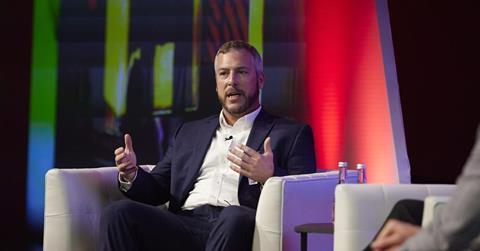
On this, unsurprisingly, both Vascor’s Thompson and United Road’s Anderson agree. “Overall, the way vehicles move doesn’t change,” says Thompson. “This chartering may cause disruption, because now there is another layer of competition that hasn’t been there in the past, so we need to think about how this impacts rates. It could also impact the way the OEMs run their network. Having that dedicated capacity now, they may just decide to truck around chronic problems.”
Anderson adds that some United Road customers have done this in the past during a crisis, only to later ask United Road to take the fleet off their hands. He compares the trend to a pendulum, swinging from OEMs focusing on their core business, to vertical integration and direct control of the fleet, back to a core business focus again.
Anderson suggests that what is needed instead is better forecasting and transparency throughout the supply chain. “We deal with all the inefficiencies in the supply chain, since we’re the last mile. We’re always putting out fires, if a ship is delayed or cars or on hold at a factory then we have to deal with it,” he says. “When there are surges of volumes, we can’t just ramp up and ramp down with the snap of a finger. We can’t build the church for Easter Sunday. That doesn’t make economic sense. It’s got to be a shared effort by all participants from car haulers to ports, rail and OEMs.”
Someone else who agrees with this alternative solution of transparency is Sarah Amico, executive chair, Jack Cooper. She says that in the long term, instead of OEMs chartering fleets, a more efficient way to get cost savings and rapid delivery is through carmakers partnering with carriers for better real-time visibility into production and shippable product.
“That would allow us on the carrier side to finance in advance and plan for investment in our capacity,” she says. “I would rather know that we might not ship as much at the start of Q1, for example, but that we’re going to need an additional 20% capacity in Q3 or Q4, because then I know to place my orders for new trucks according to when they’re going to be needed online, and I’ll know to how to fill my driver recruitment pipeline, because we have a waiting list. I can plan capacity if I know what’s coming.”

Amico says the challenge here is that this sort of information is very precious to large publicly traded companies like the major carmakers, and sometimes even the OEMs might not accurately know this sort of information as it depends on their upstream suppliers too. But she says despite this, sharing as much information about product flow as possible will go a long way to bring the savings OEMs hope to realise with a proprietary fleet.
A growing trend of consolidation
In such a fragmented industry with rising costs for both assets and operation, there is a growing trend towards consolidation. While larger firms like Jack Cooper have been investing in new trucks and expanding their fleets, smaller carriers are more at risk in an industry that is inherently cost and capital intensive.
At the beginning of April, Proficient Auto Logistics became the latest firm jumping on this trend, filing an SEC statement about its intent to consolidate with five other trucking firms while raising $100m through an initial public offering (IPO) of its common stock.
The Delaware-based FVL trucking firm is, at the time of publishing, seeking to combine with Delta Automotive Services, Deluxe Auto Carriers, Sierra Mountain Group, Proficient Auto Transport and Tribeca Automotive. Proficient will only acquire all five companies, or none at all, and the IPO and acquisitions are reliant on each other’s closing. If successful, the combined group will continue to serve customers from large OEMs as well as dealers and rental and leasing firms and will operate 49 facilities throughout the US.
“Anytime you have a fragmented industry, there’s always going to be ripeness for consolidation” - Mark Anderson, United Road
The IPO is highly speculative as it is highly unusual to fund the acquisitions with public investment, but it is part of a trend toward consolidation that can be seen in the trucking industry of North America. This may be in response to the highly fragmented and competitive market that exists in the region without dominant players. As a result of the consolidation, the company would be one of the largest fleets in North America, using around 1,130 trailers on a daily basis, including 615 company-owned trucks.
In fact, Jack Cooper was also looking set to acquire bankrupt firm Yellow’s national network of truck terminals and part of its fleet, but the deal never came to fruition. Jack Cooper previously acquired the assets of Moore Transport just last year.

Similarly, United Road has also completed some acquisitions in recent years, including Colorado-based Fleet Car Carriers in 2019. “Anytime you have a fragmented industry, there’s always going to be ripeness for consolidation,” says Anderson. He says that United Road is “always listening for opportunities that make sense,” but adds that the firm already has a lot of geographic reach. “We’re in all corners of the US and Canada, and that’s the market that we like right now, so we’re happy about that. We like the services we provide, so for us, that opportunity for growth lies in providing them better and faster.”
Anderson adds that the firm’s current size gives them agility and flexibility. “We have different programmes to provide capacity to our customers that work for us just because of our size,” he says. “That gives us a lot of flexibility to move things quickly to help our customers.”
Planting opportunities for growth
Mexico continues to be the focus of expansion for car carriers in North America. Vascor’s Thompson says he is focused on the country’s growing industry, while Amico says she has seen a rapid expansion in Jack Cooper’s operations in the region in the last 12 months. “We are fortunate that we’ve been in the market there for 25 years and have the benefit of long-standing relationships and clients and partnerships down there as well,” says Amico. “I think the market will stand up really fast, and it will probably be largely to the benefit of established players or new players that are able to establish their foothold with relative ease.”
Jack Cooper has been seeing rapid growth for services in Mexico and the most dramatic shift in its service strategy since it started operating there 25 years ago. Sarah Amico, executive chairperson, Jack Cooper previously told Automotive Logistics and Supply Chain Global conference in Dearborn that the company had opened five locations in Mexico last year and added 12 new customers. It is also looking at providing intra-Mexico car haulage services for the first time.
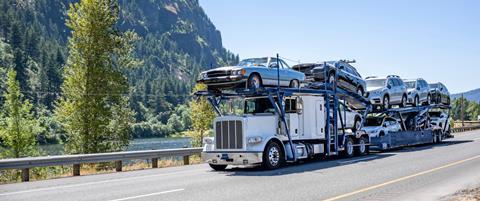
Other opportunities for growth include further use of AI, according to Transmetrics’ Koev. “AI-powered tools can analyse vast amounts of data in real time, allowing for even more dynamic route optimisation and proactive decision-making,” he says. “Additionally, the potential of autonomous trucks, especially for short-haul FVL routes, could support labour shortages and help entice younger, digital-native minds to the industry.”
Of course, labour and driver shortages is something that has long troubled the industry, so using digitalisation to encourage new talent to careers in the sector is important. United Road’s Anderson says that such a niche skillset makes attracting and retaining talent a key point of focus to allow further growth.
“We work with specialty equipment, and need super talented and hardworking drivers who are skilled in not just driving that 80,000lb, 80ft truck, but also how they load it and unload it, how they find their cars, how they have to interact with customers using technology,” Anderson says. “As long as we have that highly skilled, amazing type of professional car hauler, we’re always going to have a challenge because we’re asking for more than just being a great truck driver. We’re asking for all these other skills. So how we attract and retain and continue to build on our driver basis, it’s always going to be a challenge there.”
However, Vascor’s Thompson says in his experience, the impact of labour shortages varies depending on the location. “I think everybody talks about the driver shortage, but we’ve seen it way worse in Canada,” he says.
Jack Cooper’s Amico adds: “I think there’s an advantage in being able to understand that the labour landscape is changing, and I think we’re seeing that in efforts to organise unions at additional manufacturers. I think that potentially can shift the landscape in some ways.”

RPM’s Kerrigan hopes to see more growth between OEMs and the FVL supply chain through digitalisation.
“As an industry, we have always hoped for co-loading to alleviate congestion in the FVL supply chains across regions. As RPM and other companies continue to develop better TMS systems to identify opportunities for co-loading, we hope that OEMs will embraxe this approach,” Kerrigan says.
”It requires deep collaboration to understand how networks can be overlaid and align production, vessel and rail schedules to ultimately meet service expectations that complement each other,” he says. ”If the industry can get it right, we can achieve cost savings and improved service metrics across the FVL ecosystem. This way, everyone becomes more efficient together. We believe we are in a position to do that as a non-asset, data driven organisation with deep carrier and customer relationships.”
Key areas for investment
Aside from investing in talent, a lot of the trucking sector is investing in new technologies. “A lot of our business is moving vehicles around and using people to do that, so we are looking at different technologies that may impact that,” says Thompson. “In the industry now, we are seeing more things like automated inspection booths. We’re looking at similar technologies that could reduce the amount of vehicle movements that we have to do to inspect.”
Thompson says Vascor is looking at technologies that are electric on the shuttle landside logistics to improve emissions and sustainability, and on the FVL side the company is focused on improving digital tools used in the yard. “We are focused on how we can use technology in our yards to be more efficient and to use, for example, autonomous electric shuttle vans that could be more sustainable. We are in a growth phase,” he says. “We’re looking to expand our businesses.”
Anderson says United Road invests in three things: people, technology and trucks. “We want to make sure we have not just competitive pay, but the best pay, for our car haulers. We are investing to try to make our routes as efficient as possible, trying to prevent breakdowns on the road, trying to make sure we can maximise fuel efficiency. All of those things we use technology to do,” he says. “And then, of course, we invest in trucks.”
In the 24-month period between 2023 and 2024, he says United Road will have 300 new trucks in its fleet. And the average age of the trucks will be the lowest it’s ever been, he says, at just under five years old. “A lot of money has been put into that. And I think a lot of our competitors are doing that, too,” he adds. “We want the newest technology on our trucks, and that’s a driver satisfier as well, and it helps with fuel efficiency and productivity. We want all those things to ultimately deliver as many cars as we can in the network.”
At Finished Vehicle Logistics North America 2024 there will be analysis and expert insight on the market drivers, disruptors, economic and geo-political factors shaping the forecasts for North American vehicle production and sales, including fragmentation and further consolidation. The conference will take place 21-23 May at Waterfront Beach Resort, Huntington Beach, California.

























![Global[1]](https://d3n5uof8vony13.cloudfront.net/Pictures/web/a/d/s/global1_726550.svgz)






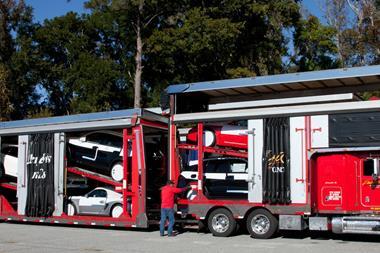
![Ryder El Paso Cross Border Facility[82]](https://d3n5uof8vony13.cloudfront.net/Pictures/380x253/1/3/0/319130_ryderelpasocrossborderfacility82_923285.jpeg)
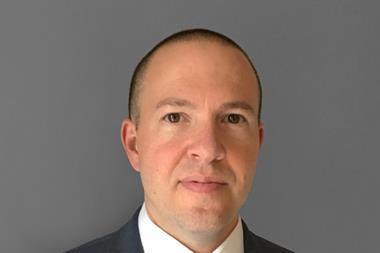





No comments yet